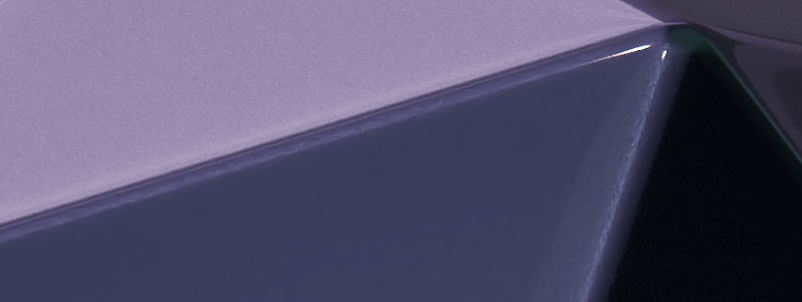MPEG-5 LCEVC
V-Nova LCEVC consists of a comprehensive SDK and an NDK for enhancing any encoding and decoding workflow with MPEG-5 Part 2 LCEVC. LCEVC provides a boost to the compression efficiency of any existing or future video codec, enabling higher quality at up to 40% lower bitrates while accelerating encoding and reducing compute costs by up to 4x.
How LCEVC works
MPEG-5 LCEVC works by encoding the source video at a lower resolution (typically 1/4 resolution) using any existing codec (the base codec), corrections are applied to that base, a content-intelligent upsampling is conducted and a final layer of spatial details are applied. The LCEVC enhancement process is low-complexity by design providing substantial compute savings compared to using the base encoder in full resolution.

For more information on the MPEG-5 Part 2 LCEVC specification visit www.lcevc.org.
How to deploy LCEVC
Whatever encoding and playback platforms or devices your product or service employs, V-Nova LCEVC provides a broad array of options to integrate at any level of your software stack or to work with solutions from third-party encoder and player vendors.

Deployment on TVs and STBs
LCEVC does not mean ‘software only’. For integration in TVs and STBs, V-Nova has created the LCEVC NDK (Native Development Kit) aimed at supporting the development of on-chip capabilities for the encoding and decoding of LCEVC.
Deploying LCEVC on the chipset using the V-Nova's LCEVC NDK guarantees:
- Improved content security
- Increased performance
- Reduced power consumption
V-Nova's LCEVC NDK is a collection of tools to Video SOC vendors and ASIC designers to accelerate the availability of LCEVC on their roadmap. The toolkit includes optimized libraries that can be used at driver level as well as fully functional and compliant ASIC IP blocks. These blocks are made available as RTL code with the relevant documentation and a group of Integration Services resources at hand to customize them for a given chipset architecture.
Upgrade encoding in days
Wherever your encoding runs, from cloud infrastructure to on-prem or personal devices, the V-Nova LCEVC SDK has the broad coverage needed to deploy optimised LCEVC-enhancement. Crucially, V-Nova LCEVC can be a software update to your existing workflows and is transparent to other systems like packaging, ad-insertion and CDN.
Rapid integration services
Integration and testing is typically a matter of days rather than weeks. Full integration services are available allowing conservation of limited company resources.
Enhance any encoder
The V-Nova LCEVC SDK uses a plug-in system via our Encoder Integration Layer (EIL) to provide a simple interface between the base encoder and the LCEVC enhancement. Over 20 encoders are already supported including x264, x265, libaom, libvpx, NVenc, MainConcept H.264/HEVC among many others in development
Up to 4x more throughput
V-Nova LCEVC typically uses the base encoder at 1/4 resolution and then employs the low-complexity optimised toolset from V-Nova LCEVC. This accelerates encoding by up to 4x for codecs like AV1 or VVC and up to 2x for AVC/H.264.
Rapid roll-out to devices
The LCEVC SDK includes a LCEVC standard compatible decoder SDK, which provides seamless integration into players on a host of device types whilst including optimizations that harness the full capabilities of different CPU, GPU and SoC architectures. Thanks to a range of reference integrations for widely used players like ExoPlayer, VLCKit and hls.js among others, deployment is quick and easy.

Broad support via software updates
The DIL and our reference implementations are available across Android, iOS, Windows, Mac and HTML5 meaning that the vast majority of devices can be quickly updated in software to enable LCEVC-enhancement decoding.

Low battery consumption
The LCEVC decoder integration layer leverages standard GPU resources on devices to decode the LCEVC enhancement whilst power consumption for the base is reduced, ensuring battery life for media consumption is not impacted.

Backwards compatible & retrofittable
LCEVC is backwards compatible meaning that decoders that have not been updated for LCEVC can still play the base video. For this reason, the same streams can address both legacy and updated devices and the rollout of LCEVC across multiple screens can be phased in as required.
Try LCEVC with your content
There is a range of ways to test LCEVC-enhanced encoding and playback for your service or application. Encode on the V-Nova platform and playback in our demo application or test locally with FFmpeg and our reference implementation players.
LCEVC enhancing NVENC for cloud gaming
This report illustrates the benefits of the MPEG-5 LCEVC enhancement applied to NVIDIA NVENC H.264 and HEVC, using an ultra low latency and GPU processing configuration relevant for use cases such as Cloud Gaming, split-compute rendering or XR streaming.
Park running UHD – 2160p – CRF
The graphs below illustrate the significant increase in compression efficiency achieved by applying LCEVC enhancement to UHD content based on the VMAF metric. For both x264 and x265 encoders, the same quality can be achieved at 45% lower bitrates in the critical range needed to deliver satisfactory visual quality (typically VMAF scores between 90 and 95).
Up to 40% bitrate savings
In the 2160p UHD test, LCEVC achieved bitrate savings of up to 40% compared to HEVC at the same objective video quality level.
Consistent Quality Across Bitrates
LCEVC maintains consistent superior quality over a wide range of bitrates from 4 Mbps to 20 Mbps for 2160p UHD video.
Measurable Quality Gains
Objective video quality metrics like PSNR and VMAF show LCEVC providing significantly better quality than HEVC at the same bitrate.



Tears of Steel HD1080p – CRF
Tests have been conducted across a vast range of 1080p content. Here is an example of how LCEVC enhancement affects the performance of x264 and x265, using CRF rate control. LCEVC-enhanced x264 achieves a compression efficiency performance that is equivalent, or better than, x265. These gains are achieved across the full range of bitrates at which these codecs are employed.

Recognized by industry experts
LCEVC has been thoroughly tried and tested by independent organisations, SPIE and MPEG itself are just a few sources of the reports presented below.
Get in touch
Have a question? Don’t hesitate to reach out.


